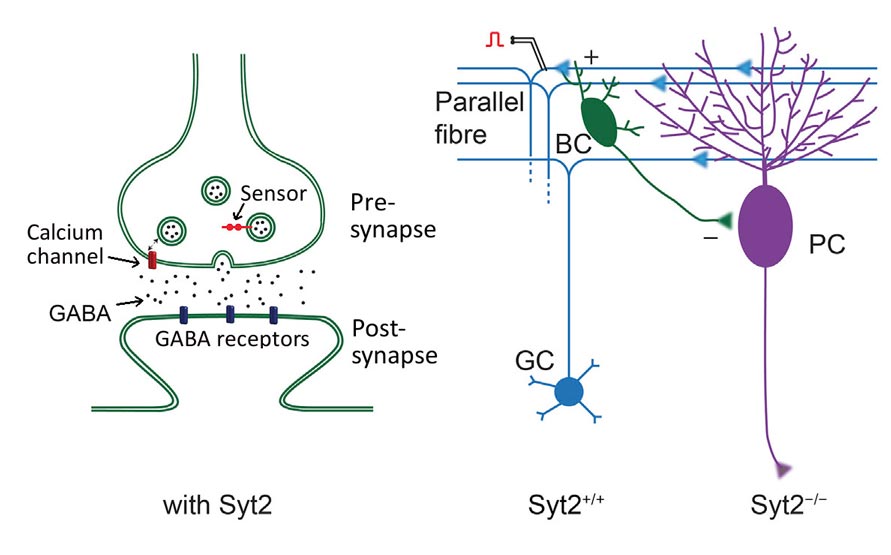January 18, 2017
Scientists find sensor that makes synapses fast
Calcium sensor at inhibitory synapse identified – Study led by Peter Jonas in Cell Reports

Synapses, the connections between neurons, come in different flavors, depending on the chemical they use as transmitter. Signal transmitters, or neurotransmitters, are released at the synapse after calcium ions flow into the neuron. The type of synapses that use a signal transmitter called GABA – the GABAergic synapses – stand out because of their speed and precision. But the secret behind their speed was not fully known until now, and neither was the sensor they use to detect the inflowing calcium. Both questions were solved in a study published today in Cell Reports by Peter Jonas, Professor at the Institute of Science and Technology Austria (IST Austria), together with his group and researchers at the Max Planck Florida Institute for Neuroscience. They find that GABAergic synapses achieve their remarkable signalling speed and reliability partly because of the sensor they use to measure the amount of calcium in the neuron, and that synaptotagmin 2 is the major calcium sensor in this kind of synapses. “We have, for the first time, identified the calcium sensor that triggers neurotransmitter release at an inhibitory synapse”, summarizes Peter Jonas.
Interneurons that use GABA as neurotransmitter play a key role in controlling activity in neuronal microcircuits. In all brain regions and species, the hallmark of these GABAergic interneurons is their signalling speed: the delay between stimulation and response lies in the submillisecond range. Peter Jonas and his team asked whether the calcium sensor that triggers neurotransmitter release contributes to this speed. In their study, they investigate the synapse between basket cells and Purkinje cells. This major inhibitory synapse is located in the cerebellum, a brain region that plays an important role in motor control.
While synaptotagmin 1 is the calcium sensor used at excitatory synapses, Peter Jonas and colleagues identify synaptotagmin 2 as the major calcium sensor in inhibitory GABAergic interneurons in the cerebellum. They demonstrate that synaptotagmin 2 triggers a quicker release of neurotransmitter than synaptotagmin 1. At the same time, synaptotagmin 2 also causes a faster refilling of vesicles with neurotransmitter, so that the neuron is ready to send another signal more quickly. This has important consequences for the function of GABAergic interneurons, explains Peter Jonas: “Using synaptotagmin 2 is one reason why GABAergic synapses send signals so fast. Synaptotagmin 2 may control the speed of inhibition in microcircuits, and allow GABAergic synapses to maintain their output by quickly replenishing the pool of neurotransmitter.”
Publication
Chen, Chong et al.: “Synaptotagmin 2 is the fast Ca2+ sensor at a central inhibitory synapse”



